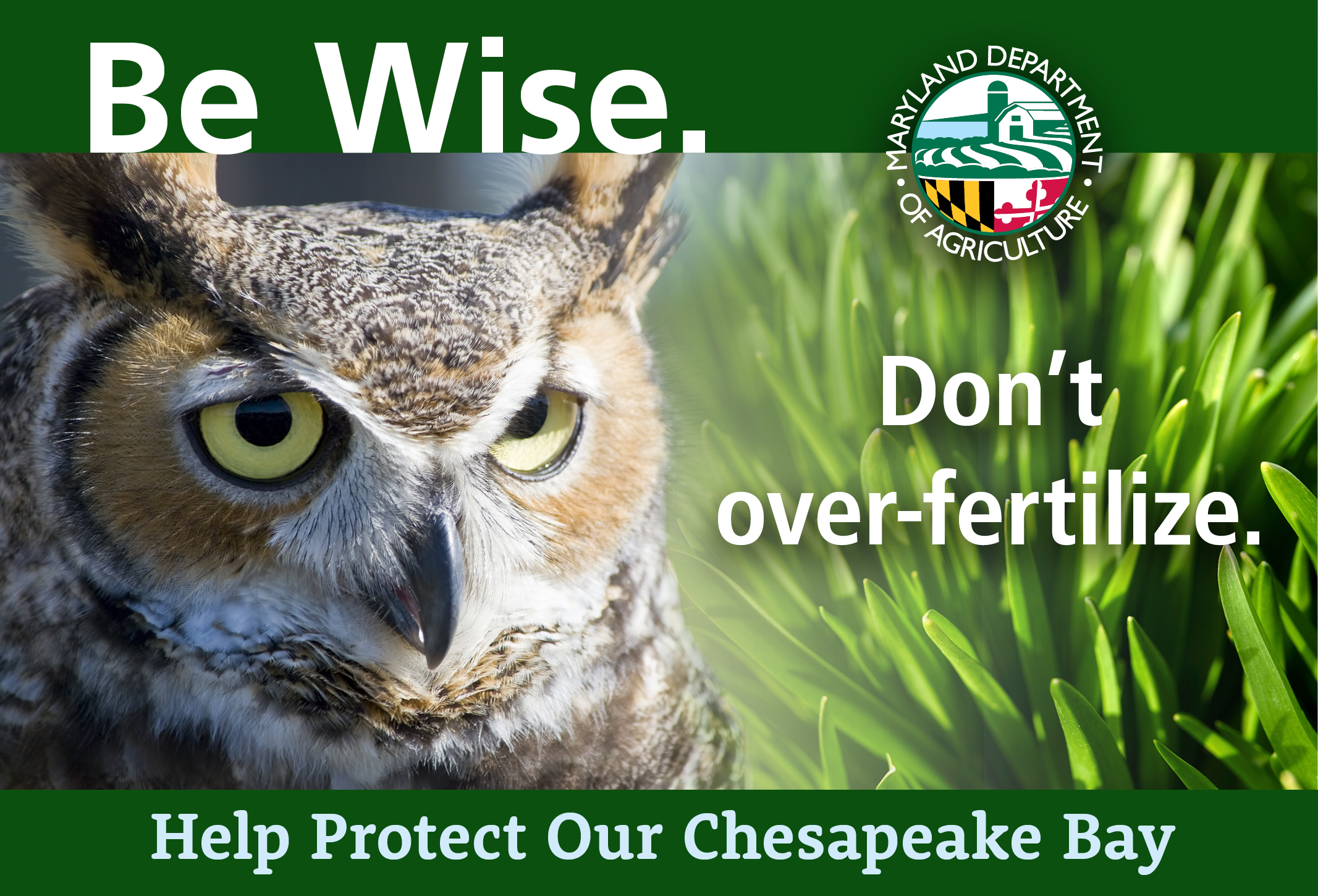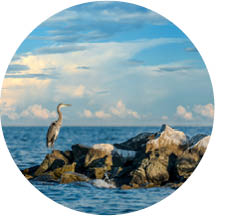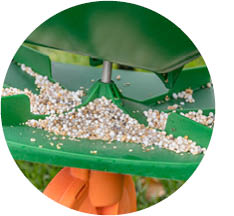Maryland's Lawn Fertilizer Law
Main_Content

News and Announcements
Lawns may not be fertilized with products containing nitrogen or phosphorus during the blackout dates; however,
Between November 16 and December 1, lawn care pros may apply up to 0.5 pound of soluble or insoluble N per 1,000 sq. ft. to the lawns they manage.
Potassium and lime may still be applied during the blackout dates since they are not considered a threat to water quality.
- Fertilizer applications containing nitrogen and phosphorus may be resumed on March 1, 2026 as long as the ground is not frozen or heavy rain is not predicted.
- 2024 Annual Fertilizer Application Reports (AFARs) were Due March 1. If you have not filed your report, please do so immediately to avoid fines and penalties.
- Pressed for time? File electronically at Maryland OneStop.
- For those who want to file paper reports, you can download a paper reporting form.
 Maryland's Lawn Fertilizer Law
Maryland's Lawn Fertilizer Law
Maryland's lawn fertilizer law helps protect the Chesapeake Bay from
excess nutrients entering its waters from urban sources, including golf courses, parks, recreation areas, businesses and thousands of lawns. Nutrients, primarily nitrogen and phosphorus, are key ingredients in lawn fertilizer. When it rains,
unused nutrients can wash into nearby storm drains and streams that empty into the Chesapeake Bay.
Once in our waterways, these nutrients contribute to the growth of algae blooms that block sunlight from reaching Bay grasses, rob the water of oxygen and threaten underwater life. While certain restrictions on fertilizer use have been in place for farmers since 2001, everyone needs to do their part to protect and restore the Bay. Maryland’s lawn fertilizer law took effect October 1, 2013.
 Hired Certified
Hired Certified
Lawn care professionals hired to apply fertilizer to lawns must be certified by the department or work under the direct supervision of an individual who is certified. This includes professionals for hire as well as individuals responsible for turf management at golf courses, public parks, airports, athletic fields, businesses, cemeteries and other non-agricultural properties.
-
Get Certified
The department offers fertilizer applicator training and certification exams throughout the year. Click here for exam dates.
-
Renew Certificates Annually by December 31
Professional Fertilizer Applicator Certificates are valid through December 31 of each year. Certificates may be renewed yearly for a $100 fee and verification of recertification training. -
Apply for a Business License
Licenses are required for individuals and businesses that fertilize turf. Licenses are valid for up to one year and expire on December 31 of each year. License holders must file an annual activity report with the department by March 1 covering the previous year. Download a business license application.
-
Avoid Penalties
Violators are subject to civil penalties of up to $1,000 for the first violation and $2,000 for each subsequent violation.
 For Homeowners
For Homeowners
Homeowners and do-it-yourselfers are required to obey fertilizer application
restrictions, use best management practices when applying fertilizer, ob
serve fertilizer blackout dates and
follow University of Maryland recommendations
when fertilizing lawns. Get more information. A county, municipality or the Maryland Department of Agriculture may enforce these requirements for homeowners. The law supersedes any existing local ordinances.

Fertilizer Rules
- Everyone must follow
University of Maryland fertilizer recommendations.
- A single fertilizer application may not exceed 0.9-pound total N per 1,000 sq ft which can include no more than 0.7 pound of soluble N per 1,000 sq ft.
-
Lawn care pros should consult the
Maryland Professional Lawn Care Manual.
- Phosphorus may only be applied when a soil test indicates that it is needed or when a lawn is being established, patched or renovated.
- Don't use fertilizer to de-ice walkways and driveways.
- Clean up fertilizer spills.
- Keep fertilizer 10 to 15 feet from waterways.
- Do not fertilize lawns if heavy rain is predicted or the ground is frozen.
- Do not apply lawn fertilizer between
November 16 and March 1.
- Enhanced efficiency controlled release products may be applied at no more than 2.5 pounds per year, with a maximum monthly release rate of 0.7 pound of N per 1,000 sq ft.
For Lawn Care Pros Only
- Fertilizer blackout dates begin
November 16 and end March 1. Lawns may not be fertilized with products containing nitrogen or phosphorus during the blackout dates;
however,
- Lawn Care Professionals (not homeowners) may apply nitrogen to lawns, between
November 16 through December 1 at a maximum rate of 0.5 pound per 1000 sq ft., using either fast or slow release nitrogen.
- Organic or natural organic turf fertilizer containing phosphorus may not be applied when soils test at "optimum" to "excessive" for phosphorus levels. (This applies to homeowners, too!)
- Enhanced efficiency fertilizers may not be applied to lawns between
November 16 and March 1 of each year.
- Fertilizer applications containing nitrogen and phosphorus may be resumed on
March 1, as long as the ground is not frozen or heavy rain is not predicted.
Updated 12/18/25